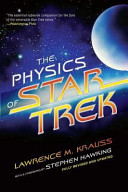Neutrinos
Neutrinos were first predicted to exist as the result of a puzzle related to the decay of neutrons. While neutrons are stable inside atomic nuclei, free neutrons are observed to decay, in an average time of about 10 minutes, into protons and electrons. The electric charge works out fine, because a neutron is electrically neutral, while a proton has a positive charge and an electron an equal and opposite negative charge. The mass of a proton plus an electron is almost as much as the mass of a neutron, so there is not much free energy left to produce other massive particles in the decay, in any case.
However, sometimes the proton and electron are observed to travel off in the same direction during the decay. This is impossible, because each emitted particle carries momentum. If the original neutron was at rest, it had zero momentum, so something else would have to be emitted in the decay to carry off momentum in the opposite direction.
Such a hypothetical particle was proposed by Wolfgang Pauli in the 1930s, and was named a “neutrino” (for “little neutron”) by Enrico Fermi. He chose this name because Pauli's particle had to be electrically neutral, in order not to spoil the charge conservation in the decay, and had to have, at most, a very small mass, in order to be produced with the energy available after the proton and electron were emitted.
Because neutrinos are electrically neutral, and because they do not feel the strong force (which binds quarks and helps hold the nucleus together), they interact only very weakly with normal matter. Yet because neutrinos are produced in nuclear reactions, like those that power the Sun, they are everywhere. Six hundred billion neutrinos per second pierce every square centimeter of your body every second of every day, coming from the Sunan inexorable onslaught that has even inspired a poem by John Updike. You don't notice this neutrino siege, because the neutrinos pass right through your body without a trace. On average, these solar neutrinos could go through 10,000 light-years of material before interacting with any of it.
Notes:
An explanation of a fascinating particle that is the byproduct of the production of proton and electrons.
Folksonomies: physics quantum physics elementary particles
Taxonomies:
/science/physics (0.588790)
/business and industrial/energy/electricity (0.305934)
/travel (0.218927)
Keywords:
neutrinos (0.911901 (positive:0.077386)), opposite negative charge (0.865373 (negative:-0.364145)), Sunan inexorable onslaught (0.797319 (negative:-0.582949)), proton (0.779170 (positive:0.047535)), decay (0.744694 (negative:-0.409220)), solar neutrinos (0.721252 (negative:-0.354333)), fascinating particle (0.617908 (positive:0.411680)), free neutrons (0.604386 (neutral:0.000000)), original neutron (0.586007 (neutral:0.000000)), little neutron (0.577727 (negative:-0.372597)), electric charge (0.577443 (positive:0.528108)), positive charge (0.575660 (negative:-0.364145)), hypothetical particle (0.563251 (neutral:0.000000)), electron (0.560580 (negative:-0.364145)), Wolfgang Pauli (0.557033 (neutral:0.000000)), atomic nuclei (0.550056 (neutral:0.000000)), charge conservation (0.544467 (negative:-0.268727)), average time (0.541449 (negative:-0.373248)), massive particles (0.536426 (negative:-0.468251)), Enrico Fermi (0.535306 (neutral:0.000000)), opposite direction (0.531138 (negative:-0.610200)), neutrino siege (0.520220 (neutral:0.000000)), square centimeter (0.512198 (negative:-0.358846)), John Updike (0.508702 (negative:-0.582949)), free energy (0.500937 (negative:-0.468251)), nuclear reactions (0.498579 (neutral:0.000000)), strong force (0.495216 (neutral:0.000000)), normal matter (0.494463 (negative:-0.350885)), small mass (0.489120 (positive:0.210172)), momentum (0.441275 (negative:-0.573696))
Entities:
Wolfgang Pauli:Person (0.742248 (neutral:0.000000)), Enrico Fermi:Person (0.661186 (neutral:0.000000)), John Updike:Person (0.471264 (negative:-0.582949)), 10 minutes:Quantity (0.471264 (neutral:0.000000))
Concepts:
Electron (0.984078): dbpedia | freebase | opencyc
Neutron (0.890143): dbpedia | freebase | opencyc
Proton (0.768759): dbpedia | freebase | opencyc
Electric charge (0.731992): dbpedia | freebase | opencyc
Quark (0.681087): dbpedia | freebase
Neutrino (0.676397): dbpedia | freebase | opencyc
Atom (0.610037): dbpedia | freebase | opencyc
Fermion (0.583979): dbpedia | freebase





